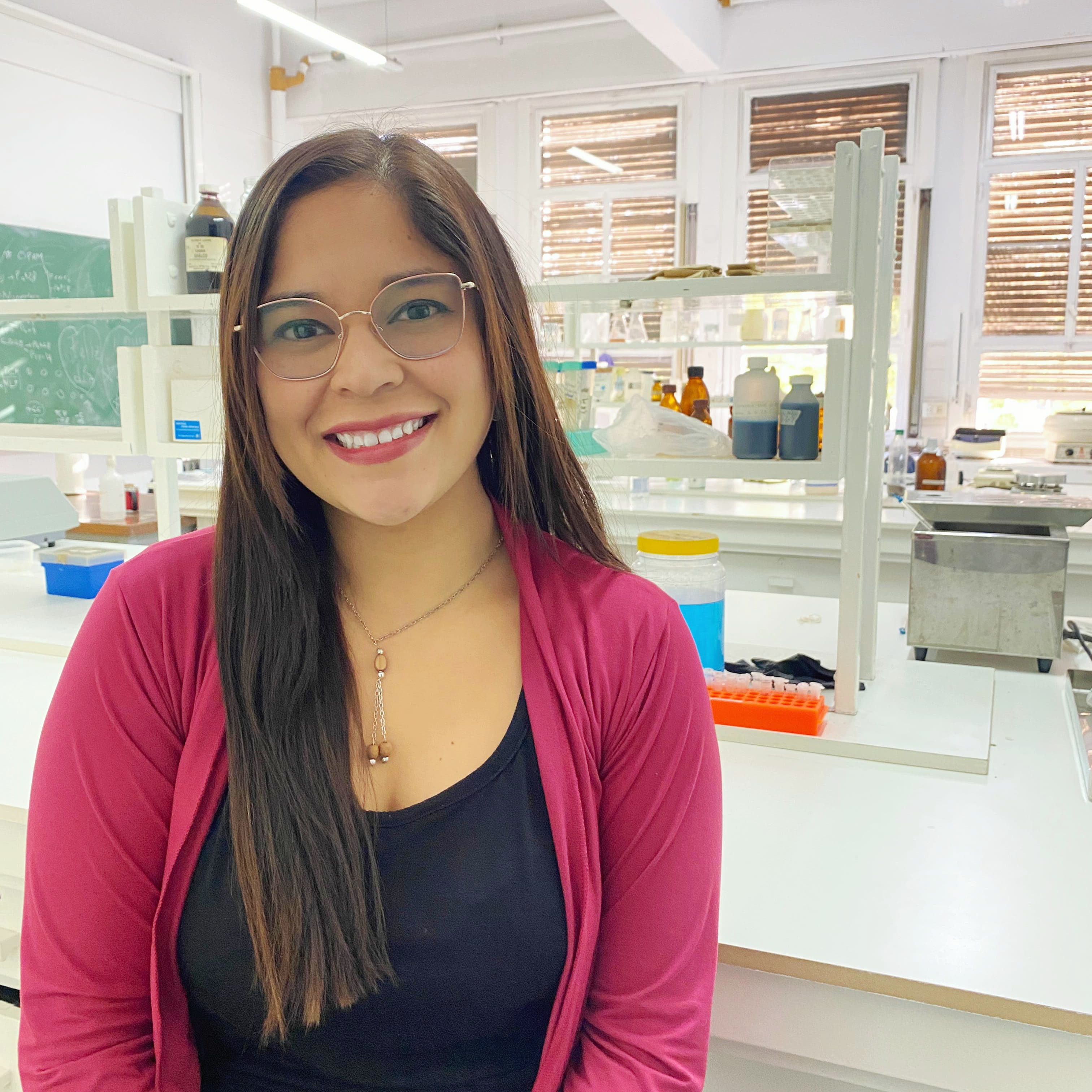May 30, 2025
Version 2
Purification of His-Tagged Proteins using Ni-NTA Beads V.2
- Mariángeles Ávila Maniero1,
- Antonella Denise Losinno1,
- Karla Vanessa Gaona1,
- María Teresa Damiani1
- 1Instituto de Bioquímica y Biotecnología, Facultad de Ciencias Médicas, Universidad Nacional de Cuyo
- Reclone.org (The Reagent Collaboration Network)Tech. support email: protocols@recode.org

Protocol Citation: Mariángeles Ávila Maniero, Antonella Denise Losinno, Karla Vanessa Gaona, María Teresa Damiani 2025. Purification of His-Tagged Proteins using Ni-NTA Beads. protocols.io https://dx.doi.org/10.17504/protocols.io.kqdg3wz8ev25/v2Version created by Karla Vanessa Gaona
License: This is an open access protocol distributed under the terms of the Creative Commons Attribution License, which permits unrestricted use, distribution, and reproduction in any medium, provided the original author and source are credited
Protocol status: Working
We use this protocol and it's working
Created: May 29, 2025
Last Modified: May 30, 2025
Protocol Integer ID: 219197
Funders Acknowledgements:
Chan Zuckerberg Initiative
Abstract
This protocol describes the batch purification of recombinant His-tagged proteins expressed in E. coli. Proteins containing a 6xHis tag are purified using Ni-NTA (Nickel-Nitrilotriacetic Acid) beads. The His-tag allows selective binding to nickel ions, enabling efficient purification under native conditions. After cell lysis, the lysate is incubated with Ni-NTA beads, followed by washing and elution using imidazole.
Guidelines
Ensure all buffers and reagents are freshly prepared. Pre-cool the centrifuge and prepare all materials. It is recommended to streak a sample on an autoinduction plate and a non-induced control plate, in parallel, to assess the specificity and efficiency of the protein expression and purification.
Materials
- PBS (Phosphate Buffered Saline)
- Triton X-100
- Tris
- NaCl
- Imidazole
- Glycerol
- Bromophenol blue
- SDS
- ddH₂O
Before start
It is recommended to streak a sample on an autoinduction plate and a non-induced control plate, in parallel, to assess the specificity and efficiency of the protein expression and purification.
Cell Lysis
Cell Lysis
Harvest the induced biomass using a sterile microscope slide to gently scrape the bacterial lawn from the induction plate. Resuspend the collected biomass in 12 mL of lysis buffer.
| Component | Final concentration | |
| PBS | 1X | |
| Triton X-100 | 1% (v/v) |
Table 1. Lysis buffer composition
Sonicate the suspension using a 650 W ultrasonic processor, applying the following cycle: 1 cycle of 5 minutes with 3 seconds ON and 4 seconds OFF at 70% amplitude. Use a probe with a 6 mm diameter tip (standard for small-volume processing). Perform the sonication in an ice bath to minimize heat generation and protect protein integrity. Repeat until the sample becomes transparent.
Centrifuge the lysate at 15,000 g for 15 minutes.
Collect the supernatant for purification.
Day 1 – Binding to Ni-NTA Beads
Day 1 – Binding to Ni-NTA Beads
Take 50 µL of Ni-NTA bead slurry into a 1.5 mL Eppendorf tube.
Equilibrate beads with 1 mL of binding buffer, rotate for 5 min, and centrifuge at 10,000 rpm for 5 min. Discard supernatant. Repeat the wash with another 1 mL of binding buffer. Centrifuge again at 10,000 rpm for 5 min.
| Component | Final concentration | |
| Tris, | 50 mM | |
| NaCl | 500 mM | |
| Imidazole | 10 mM |
Table 2. Binding buffer composition (pH 7.5)
Add supernatant of sonication to equilibrated beads and incubate overnight at 4°C in a rotating mixer.
Day 2 – Washing and Elution
Day 2 – Washing and Elution
Centrifuge beads at 10,000 rpm for 5 min and collect the flowthrough (keep flowthrough on ice).
Wash beads twice with 5 times the volume of beads (e.g., 250 µL), rotating for 5 min and centrifuging at 10,000 rpm for 5 min each time. Keep washes on ice.
| Component | Final concentration | |
| Tris, | 50 mM | |
| NaCl | 150 mM | |
| Imidazole | 300 mM |
Table 3. Wash buffer composition (pH 7.5)
Elute the protein with elution buffer adding 6 times the volume of beads (e.g., 300 µL), rotate 5 min and centrifuge at 10,000 rpm for 5 min. Collect the eluate and keep it on ice.
| Component | Final concentration | |
| Tris, | 50 mM | |
| NaCl | 150 mM | |
| Imidazole | 300 mM |
Table 4. Elution buffer composition (pH 7.5)
Repeat step 3 for a second fraction.
Bead Cleaning and Storage
Bead Cleaning and Storage
Wash beads three times with distilled water (1 hour on rotator, centrifuge and discard supernatant each time).
Add the same volume of beads using 20% ethanol.
Store the beads at 4°C.
SDS-PAGE Sample Preparation
SDS-PAGE Sample Preparation
Mix samples with 4X sample buffer as follows:
- Flowthrough: 5 µL sample + 5 µL H2O + 3.3 µL SB 4X
- Washes and Elutions: 10 µL sample + 3.3 µL SB 4X
- Boil samples at 95°C for 10 minutes.
Run on polyacrylamide gel and analyze expression and purification results. Use a resolving gel with an acrylamide concentration between 10-15%, depending on the molecular weight of the target protein and a 4% stacking gel. Include samples from both autoinduced and non-induced cultures to properly evaluate the specificity and success of the expression and purification process.
Applications
Applications
This general purification protocol using Ni-NTA beads has been successfully applied to purify the following proteins:
- BST LF mCherry protein
- Open Vent mCherry protein
- PFU DNA polymerase
Results
Results
To illustrate the results of the purification process, the following SDS-PAGE image shows the elution fractions obtained from the OpenVent-mCherry protein purification. A band appears around 118 kDa, which corresponds to the expected molecular weight of the OpenVent DNA polymerase fused to mCherry
Figure 1. SDS-PAGE analysis of purified OpenVent-mCherry protein.
